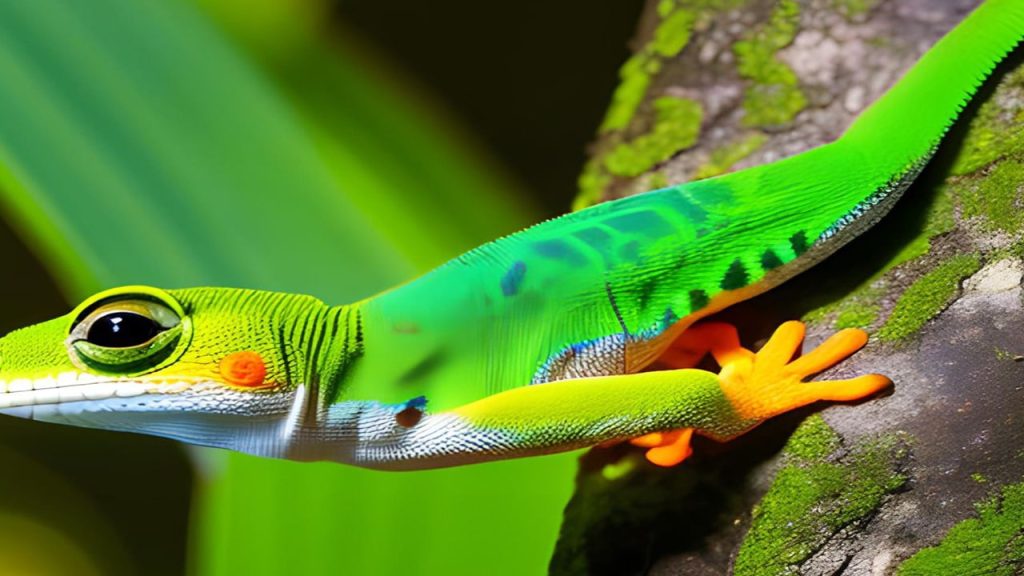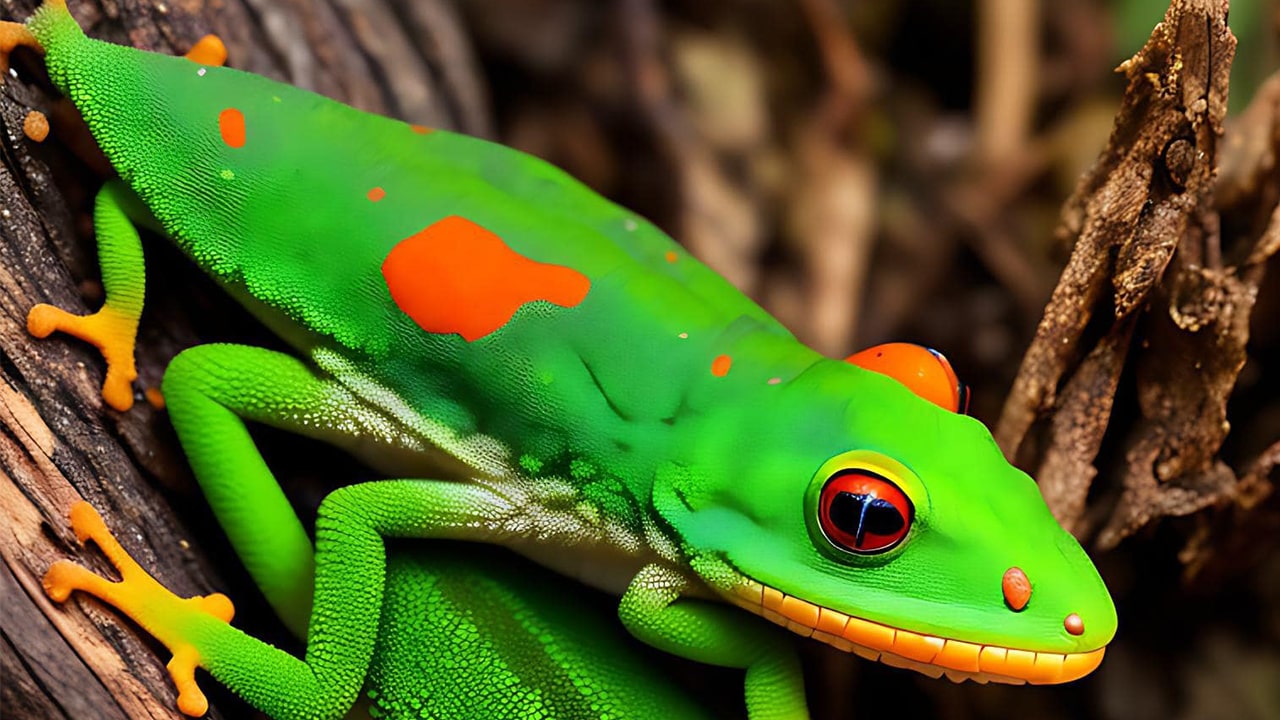Madagascar Day Geckos, scientifically known as Phelsuma madagascariensis, are a popular species of geckos found in Madagascar. These geckos are highly admired for their striking beauty, and their fascinating behavior. One of the most intriguing aspects of these geckos is their ability to survive in the wild. In this article, we will discuss some of the unique traits and adaptations that enable Madagascar Day Geckos to survive in their natural habitat.
Contents
Introduction to Madagascar Day Geckos
Madagascar Day Geckos are native to Madagascar and the surrounding islands, and they can be found in various habitats, such as rainforests, coastal forests, and plantations. These geckos have distinctive features, such as bright green skin with red or blue markings, large eyes, and long toes with adhesive pads. They are also known for their diurnal behavior, which means they are active during the day and rest at night.
Camouflage
One of the essential survival traits of Madagascar Day Geckos is their ability to camouflage themselves in their surroundings. Their bright green skin with red or blue markings blends perfectly with the vegetation, making them difficult to spot by predators. This adaptation enables them to remain hidden and avoid becoming prey.
Adhesive Pads
Madagascar Day Geckos have long toes with adhesive pads that help them to climb trees, walls, and other vertical surfaces. These adhesive pads work by utilizing van der Waals forces to stick to surfaces, allowing the geckos to climb without slipping. This adaptation also helps them to escape from predators, as they can climb to higher ground quickly.
Diet
Madagascar Day Geckos are primarily insectivores, and they feed on a variety of insects, such as crickets, moths, and flies. They have a unique feeding behavior, where they lick nectar from flowers and fruits. This behavior enables them to obtain additional nutrients and hydration, especially during the dry season when water is scarce.
Reproduction
Madagascar Day Geckos reproduce sexually, and the females lay eggs after mating. The eggs are deposited in protected areas, such as tree hollows or under the bark of trees, where they are safe from predators. The females will guard the eggs until they hatch, and the young geckos are independent immediately after hatching.
Temperature Regulation
Madagascar Day Geckos are ectothermic, which means they rely on external sources to regulate their body temperature. These geckos have adapted to survive in a wide range of temperatures, from 18°C to 35°C. They bask in the sun to raise their body temperature and seek shade or cooler areas to lower it.
Communication
Madagascar Day Geckos communicate with each other using various vocalizations, such as chirps, clicks, and squeaks. They use these sounds to attract mates, warn of predators, and establish their territory. This communication helps them to survive by maintaining social bonds and avoiding conflicts.
Defense Mechanisms
Madagascar Day Geckos have several defense mechanisms to protect themselves from predators. They can shed their tails as a distraction tactic, which allows them to escape while the predator is distracted. They also have sharp teeth and can bite if threatened. Additionally, their bright coloration serves as a warning signal to potential predators, indicating that they are poisonous or dangerous.
Threats to Survival
Despite their unique adaptations and survival traits, Madagascar Day Geckos are still facing several threats to their survival. Habitat destruction, illegal pet trade, and invasive species are some of the significant threats facing these geckos. Conservation efforts, such as habitat protection and breeding programs, are crucial to ensure the survival of this species.

Conclusion
In conclusion, Madagascar Day Geckos possess various unique traits and adaptations that enable them to survive in their natural habitat. Their ability to camouflage themselves, climb vertical surfaces, adapt to a wide range of temperatures, and communicate with each other are just a few of the many survival traits that these geckos exhibit. However, despite their impressive adaptations, they still face significant threats to their survival, emphasizing the importance of conservation efforts to protect this beautiful species.
FAQs
- Are Madagascar Day Geckos good pets?
Madagascar Day Geckos can make excellent pets, but they require specific care and attention. They need a warm and humid environment, a varied diet, and plenty of space to climb and exercise.
- How long do Madagascar Day Geckos live?
Madagascar Day Geckos can live up to 10 years in captivity with proper care.
- Can Madagascar Day Geckos change color?
No, Madagascar Day Geckos cannot change color. Their bright green skin with red or blue markings is their natural coloration.
- Are Madagascar Day Geckos endangered?
Madagascar Day Geckos are not currently classified as endangered, but they are facing threats to their survival due to habitat destruction and the illegal pet trade.
- How do I create a suitable habitat for my Madagascar Day Gecko?
To create a suitable habitat for your Madagascar Day Gecko, you will need a terrarium with plenty of climbing surfaces, a heat lamp, and a UVB light. You will also need to maintain the proper temperature and humidity levels and provide a varied diet of insects and fruit.


